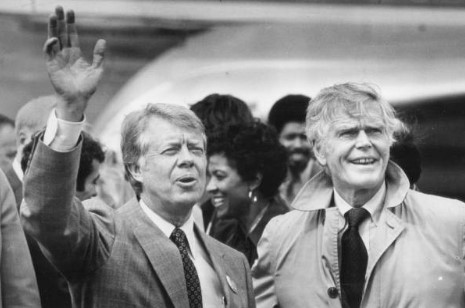At the age of 97, former President Jimmy Carter has stepped into a dispute about a short gravel road to an isolated village in Alaska. The road would connect King Cove, population 750, to the small air strip at Cold Bay, with access by air to Anchorage, 620 miles away. There is no other access except by boats or helicopters, both often sidelined by bad weather.
The road would provide long-needed access to medical care and other vital services, but has been blocked for decades because of the Alaska National Interest Lands Conservation Act, which created 157 million acres of national parks, wilderness areas, and wildlife refuges, one of which lies between King Cove and Cold Bay. Years of negotiation finally produced a land exchange solution to allow the road while expanding the refuge, but environmental industry groups sued.
Carter filed a legal brief, calling the Alaska lands bill “the most significant domestic achievement of my political life.” Others view it as proof that he never really understood the West. For me, that became obvious just weeks after his 1977 inauguration, when he stunned the West by announcing a “hit list” of western water projects authorized by Congress that he wanted de-authorized. He was flabbergasted by the political firestorm it caused, and his plummeting popularity in rural America. Nearly every elected official in the West, including members of his own party, attacked him for his failure to understand the realities of the arid region.
Water projects had become the most powerful tools of powerful Congressmen, including Colorado’s Wayne Aspinall, the House Interior Committee Chairman who had made deals for projects that would require generations to complete. Carter’s announcement called for de-authorizing 19 projects, and re-evaluating 13 more, mostly in the South and West. The list even included the Tennessee Tombigbee Waterway, the Central Arizona Project, and several others already under construction. Congress had negotiated for 30 years or more, forging very delicate agreements through bitter struggles.
For example, Colorado had agreed to the giant Central Arizona Project (diverting Colorado River water to Phoenix) only in exchange for several Colorado projects that had not yet been built, including Animas-La Plata, Dallas Creek, Narrows, San Miguel, and Savory Pothook. Water providers couldn’t help seeing the “hit list” as a bait-and-switch.
Carter eventually prevailed on numerous projects (he wasn’t completely wrong; some of them probably were not well planned) but he paid a heavy price. His relationships suffered badly with elected officials of both parties in the West and South, and the campaign to destroy dams and reservoirs has never let up.
Carter’s misreading of public sentiment should be viewed in its historical context. In June, 1976, the brand-new Teton Dam, a 305-foot high structure in Idaho had failed, dumping 260,000 acre-feet of water, flooding Wilford, Sugar City, Rexburg and parts of Idaho Falls, and killing 14 people. It was national television news for days. A sympathetic news media portrayed a growing opposition to continued federal funding of water projects in general throughout the 1970s. Carter assumed that sentiment represented a geographically broader area than it did – after all, the Teton Dam flood occurred during his presidential campaign.

Yet many viewed his “attack” on water projects as an attack specifically on the West and South, and not just about water, but more broadly about the prosperity of rural America. Since water has always been the lifeblood of the arid West, an attack on water must surely be an attack on life in the West, or so it seemed to many westerners. No wonder those regions became Republican strongholds for the next 25 years. Millions of westerners and southerners felt abandoned. And East-West, North-South issues began to break down along more partisan lines than before.
They contributed greatly to Carter’s defeat in 1980. In fact, some scholars including Marc Reisner (author of Cadillac Desert) argue that this issue played as much of a role in his loss as the Iran hostage crisis and double-digit inflation. Except his home state of Georgia, Carter lost every single southern and western state. Several of his western supporters also lost their bids for re-election in 1978 and 1980, including seven governors and powerful Democratic senators like Floyd Haskell (CO), Mike Gravel (AK), Frank Church (ID), Dick Clark (IA), John Culver (IA), George McGovern (SD), and Warren Magnuson (WA).
It was ironic because Carter’s own roots were southern and rural. Yet too many rural Americans had come to believe he didn’t care to understand their histories, economies, lifestyles and needs. It became a regional and cultural division that remains to this day, as the plight of King Cove, Alaska so clearly demonstrates.




Comments on this entry are closed.